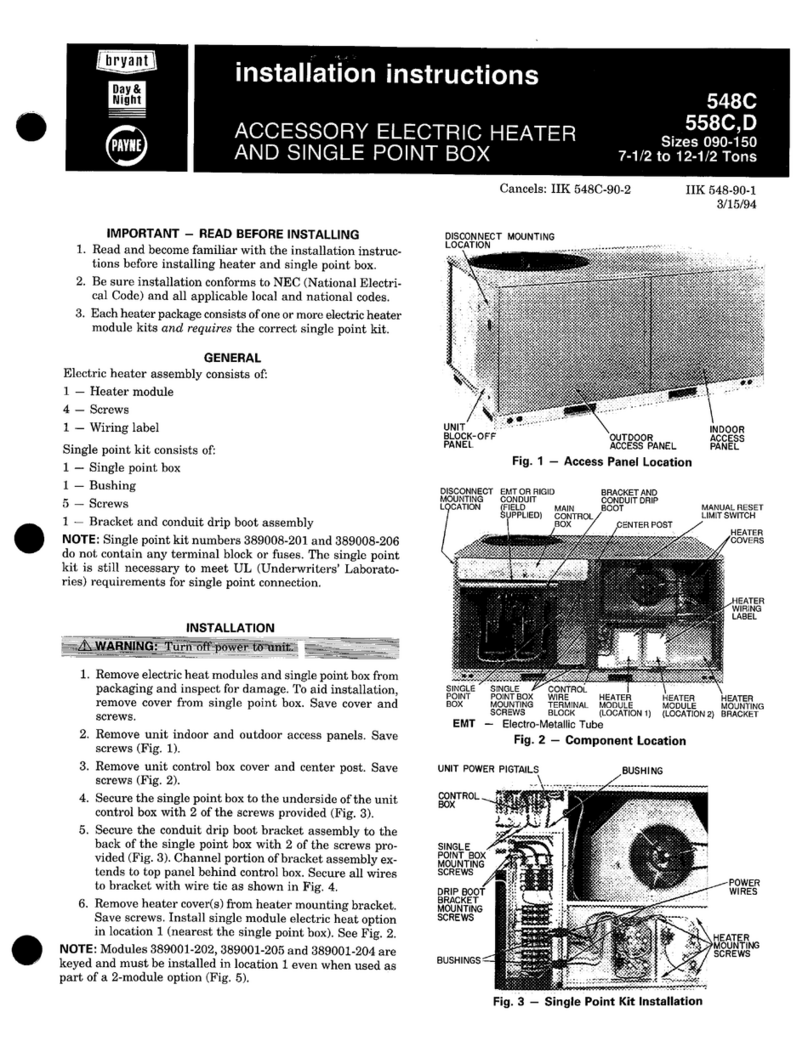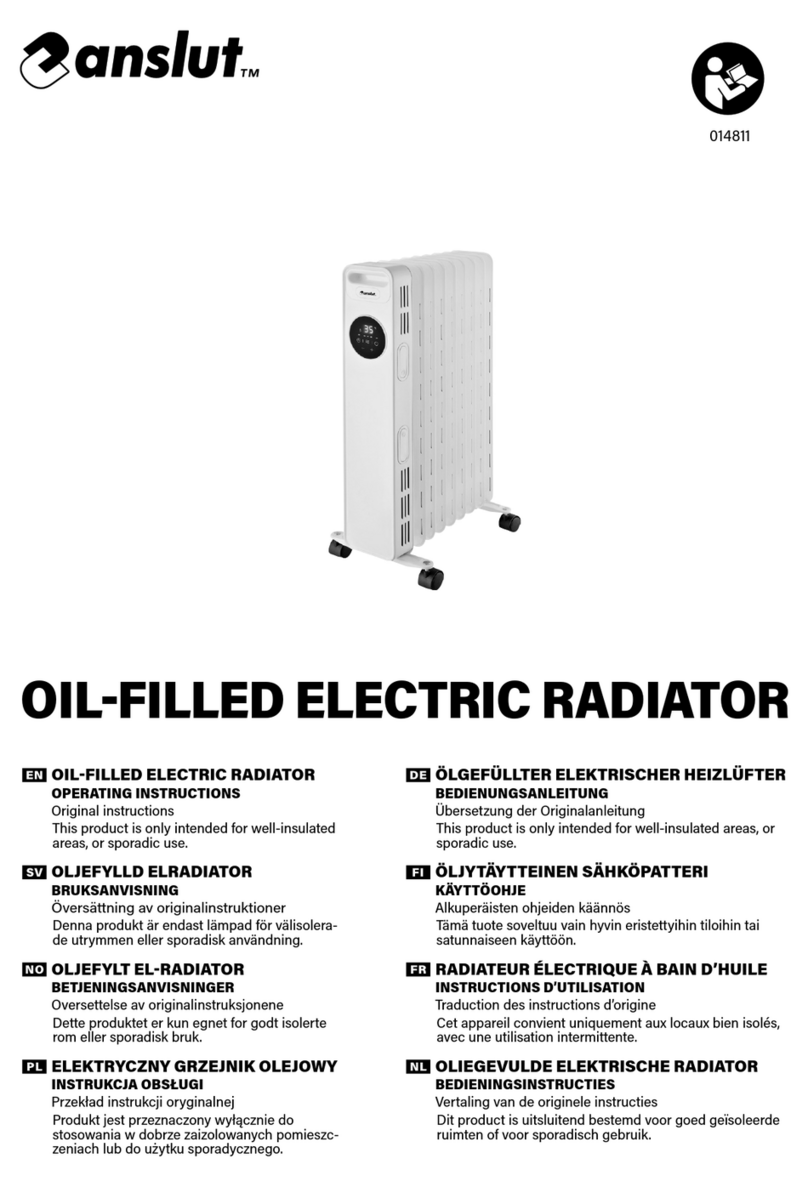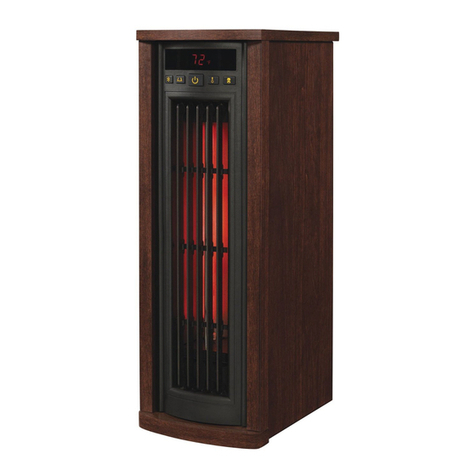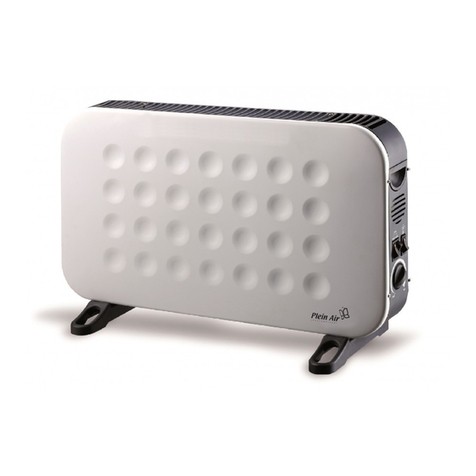Schwank S100 Operating instructions

S100/ITB I&O Manual
IM101230
RD: JAN 2012
RL: 6B- BA
INSTALLATION / OWNER’S MANUAL
Improper installation, adjustment, alteration, service or
maintenance can cause property damage, injury or death.
Read the installation and operating and maintenance instruc-
tions thoroughly before installing or servicing this equipment.
SAFETY ALERT:
This heater must be installed and serviced only by a trained gas service techni-
cian. Failure to comply could result in personal injury, death, fire and/or property
damage.
Do not store or use gasoline or other flammable vapours and liquids in the
vicinity of this or any other gas fired appliance.
IF YOU SMELL GAS:
Extinguish any open flame
Do not attempt to light this or any other appliance
Don’t touch any electrical switch, or telephone
Immediately call your gas supplier from a neighbor’s phone
Follow any and all instruction from your gas supplier
If your gas supplier is not available, call the fire department
WARNING
FIELD CONVERTIBILITY:
This appliance is field con-
vertible to LP gas.
Keep this manual in a secure place .
Record for future reference:
Model #:
Serial #:
(located on heater rating label)
Model
S100 - S100U &
Model
ITB - ITBU
LOWINTENSITYTUBETYPE INFRARED HEATERS

2
S100/ITB I&O Manual
IM101230
RD: JAN 2012
RL: 6B- BA
NOTICE:
This manual is current for this product. Occasional revision of the product Certification Stan-
dard may require changes to the product and/or this manual.
This publication, or parts thereof, may not be reproduced in any form, without prior written
consent from The Manufacturer. Unauthorized use or distribution of this publication is strictly
prohibited.
Schwank Group
Schwank and InfraSave brands
5285 Bradco Boulevard
Mississauga, Ontario,L4W 2A6
PO Box 988, 2 Schwank Way
Waynesboro, Georgia 30830
Customer & Technical Services
Phone: 877-446-3727
Fax: 866-361-0523
www.schwankgroup.com
www.infrasave.com

3 S100/ITB I&O Manual
IM101230
RD: JAN 2012
RL: 6B- BA
TABLE OF CONTENTS
TOPIC .........PAGE
INSTALLATION
IMPORTANT INFORMATION - READ FIRST
APPLICATION..............................................4
HEATER EXPANSION ...........................5, 31
GAS CONNECTION ...............................5, 31
See also “Flexible Gas Connection”......31
VENTING.................................................5, 26
START UP ‘SMOKE’....................................5
CLEARANCE TO COMBUSTIBLES............6
Clearances Figure & Table ........................7
STACKING HEIGHT SIGN NEW..............8
1. LABOR REQUIREMENTS ...............................9
2. INSTALLATION IN AIRCRAFT HANGARS .....9
3. INSTALLATION IN COMMERCIAL
GARAGES........................................................9
4. INSTALLATIONS OTHER THAN
SPACE HEATING.............................................9
5. PRE-INSTALLATION SURVEY......................10
6. MOUNTING CLEARANCES...........................11
SERVICE CLEARANCE.................................11
HEATER PLACEMENT GUIDELINES...........12
7. SYSTEMS WITH 90° & 180° ELBOWS .........12
ELBOW KIT DIMENSIONS .…………..13, 50
8. SUSPENDING THE SYSTEM........................14
9. BURNER & TUBE INSTALLATION
STRAIGHT TUBE SYSTEM........................15
‘U’ TUBE SYSTEM......................................17
SPECIAL COUPLING -100,175 & 200 Mbh..19
9.4 SESMIC RESTRAINT ....................................20
9.5 HIGH WIND RESTRAINT...............................20
9.6 SEISMIC RESTRAINT ‘U’-TUBE....................21
10. REFLECTOR INSTALLATION......................22
11. FLUE VENTING.............................................24
12. COMBUSTION AIR DUCT............................27
TOPIC ……...PAGE
13. GAS SUPPLY ..................................................29
HEATER EXPANSION.....................................30
FLEXIBLE GAS CONNECTION.......................30
14. ELECTRICAL AND THERMOSTAT.................32
15. HIGH ALTITUDE INSTALLATION...................32
16. LIGHTING INSTRUCTIONS ...........................32
17. RECOMMENDED MAINTENANCE.................32
18. WIRING DIAGRAMS
LINE VOLTAGE THERMOSTAT..................33
24 VOLT THERMOSTAT..............................34
19. WIRING DIAGRAM MULTIPLE HEATERS
PER THERMOSTAT.....................................35
20. SEQUENCE OF OPERATION.........................36
21. TROUBLESHOOTING GUIDE.........................37
22. SPARK IGNITION CIRCUIT ............................39
SPARK IGNITER SET UP...............................39
23. FLAME SENSING CIRCUIT ............................40
24. START– UP / COMMISSIONING SHEET.......41
PRODUCT DIMENSIONS & DATA
25. HEATER DIMENSIONS / WEIGHTS ………43
INSTALLATION DIMENSIONS ………. ..44
26. BURNER / TUBE KIT ASSEMBLY CHART
STRAIGHT TUBE SYSTEM ………….......45
‘U’ TUBE SYSTEM ………………………...46
27. TURBULATORS...............................................47
28. HIGH ALTITUDE & ORIFICE CHART...... 47 - 48
29. OPTIONAL ACCESSORIES..................... 49 - 52
30. BURNER PARTS LIST ............................ 53 - 54
30. TUBE SYSTEM PARTS LIST...........................55
WARRANTY STATEMENT ............BACK PAGE
S100 - S100U and ITB - ITBU SERIES
GAS FIRED INFRARED
LOW INTENSITY TUBE TYPE

4
S100/ITB I&O Manual
IM101230
RD: JAN 2012
RL: 6B- BA
APPLICATION
A gas-fired radiant tube heater may be installed for heating of commercial / industrial non-
residential spaces. It is beyond the scope of these instructions to consider all conditions that
may be encountered. Installation must conform with all local building codes or, in the absence
of local codes, with the National Fuel Gas Code, ANSI Z223.1/NFPA 54 in the U.S.A. or the
Natural Gas and Propane Installation Code, CSA B149.1 in Canada. The latest edition Electri-
cal Code ANSI/NFPA N0 70 in the U.S.A. and PART 1 CSA C22.1 in Canada must also be ob-
served.
Installation of a gas fired tube heater must conform to all heating installation design procedures
including clearance to combustibles, connection to the gas and electrical supplies, and ventila-
tion.
This heater is not for installation in a Class 1 or Class 2 explosive environment, nor a resi-
dence. If installation of this equipment is in question, consult with local authorities having juris-
diction (Fire Marshall, labor department, insurance underwriter, or others).
Revisions to codes and/or standards, may require revision to equipment and installation proce-
dures. In case of discrepancy, the latest codes, standards, and installation manual will take pri-
ority over prior releases.
Models S100 and ITB may be installed for heating of commercial / industrial non-
residential indoor spaces.
MODELS AVAILABLE FOR OTHER APPLICATIONS:
Models SPW-JZ and IWP have a powder coated water resistant burner enclosure
and may be installed for heating of commercial / industrial non-residential outdoor
spaces and wet indoor environments.
Models STW-JZ and IW have a stainless steel water resistant burner enclosure and
may be installed for heating of commercial / industrial non-residential outdoor
spaces and harsh wet indoor environments.
Improper installation, adjustment, alteration, service or maintenance can cause
property damage, injury or death. Read and understand this installation and op-
eration manual thoroughly prior to assembly, installation, operation or service to
this appliance.
This heater must be installed and serviced only by a trained gas service techni-
cian.
Do not store or use gasoline or other flammable vapours and liquids in the vicinity
of this or any other gas fired appliance.
Failure to comply could result in personal injury, death, fire and/or property dam-
age.
Do not store or use gasoline or other flammable vapours and liquids in the vicinity
of this or any other gas fired appliance.
This appliance may have sharp edges and corners. Wear protective clothing such
as gloves and protective eye wear when servicing this or any other appliance.
WARNING

5 S100/ITB I&O Manual
IM101230
RD: JAN 2012
RL: 6B- BA
Heater Expansion
It is a normal condition that during heat-up and cool-down a tube
heater will expand and contract. Allowances for heater expansion
must be made in the gas connection, venting and combustion air
ducting. Improper installation, alteration, or adjustment can result in
WARNING
Venting
Inadequate venting of a heater may result in asphyxiation, carbon
monoxide poisoning, injury or death. This heater may be directly or
indirectly vented from the space. Venting must be in accordance with
all local, state, provincial, and national codes (ANSI Z223.1/NFPA 54 in USA;
B149.1 in Canada) and as indicated in this manual. Refer to Sections 11 & 12
Gas Connection
Improper installation, connection, or adjustment can result in property
damage, toxic gases, asphyxiation, injury or death. Using an ap-
proved flexible gas connector in the USA or Type 1 hose connector in
Canada, the gas supply to the heater must be connected and tested in accordance with all lo-
cal, state, provincial, and national codes (ANSI Z223.1/NFPA 54 in USA; B149.1 in Canada)
and as indicated in this manual. Refer to Section 13
WARNING
WARNING
WARNING Start-Up ‘SMOKE’ Condition
During start up, the heating of material coatings used in the production process of tubes and
reflectors will create smoke during the initial period of operation. This condition is normal and
temporary .
Ensure that there is sufficient ventilation to adequately clear any smoke from the space.
Notify site and safety personnel to ensure that alarm systems are not unduly activated.

6
S100/ITB I&O Manual
IM101230
RD: JAN 2012
RL: 6B- BA
Clearance to combustibles
Location of flammable or explosive objects, liquids or vapors close to the heater may cause fire
or explosion and result in property damage, injury or death. Do not use, store or locate flamma-
ble or explosive objects, liquids or vapors in proximity of the heater.
The clearance to combustible material represents the minimum dis-
tance that must be maintained between the outer heater surface and
a nearby surface. The stated clearance to combustibles represents a
surface temperature of 90F° (50C°) above room temperature. It is the
installer’s responsibility to ensure that building materials with a low
heat tolerance which may degrade at lower temperatures are pro-
tected to prevent degradation. Examples of low heat tolerance mate-
rials include vinyl siding, fabrics, some plastics, filmy materials, etc.
In locations used for the storage of combustible materials, signs must be posted to specify the
maximum permissible stacking height to maintain the required clearances from the heater to
the combustibles. Such signs must either be posted adjacent to the heater thermostats or in
the absence of such thermostats in a conspicuous location. In addition to stored or stationary
material, consideration must also be given to moveable objects such as cranes, vehicles, and
overhead doors, and structural objects such as sprinkler heads, electrical and gas lines, and
electrical fixtures.
It is beyond the scope of these instructions to consider all conditions that may be encountered.
Consult local authorities such as the Fire Marshall, insurance carrier, or safety authorities if you
are uncertain as to the safety or applicability of the proposed installation.
Refer to Figure 1 and Table 1 for the certified clearances to combustibles for the appro-
priate model input/size.
WARNING

7 S100/ITB I&O Manual
IM101230
RD: JAN 2012
RL: 6B- BA
TABLE 1 MINIMUM CLEARANCES TO COMBUSTIBLES*
FIGURE 1 MINIMUM CLEARANCES TO COMBUSTIBLES* - refer to Table 1 for values
*NOTE: Clearances are measured from the reflector.
The clearance to combustible materials represents the minimum distance that must be main-
tained between the heater and a nearby surface. The stated clearance to combustibles
NOTE: A ‘PEEL & STICK’ SIGN IS SUPPLIED: USE AN INDELIBLE MARKER TO
ENTER VALUES ‘H’, ‘S’, ‘F’, & ‘B’ ON .
POST THE SIGN ADJACENT TO THE HEATER THERMOSTAT OR IN A
PROMINENT LOCATION. See next page for details.
S S
FLOOR
H
T
H
Maximum
Stack Height
H= T- C
‘T’ is meas-
ured on site,
‘C’ is in Table
FLOOR
MODEL
BOTH “STRAIGHT”
& “U-TUBE
SUSPENDED AT AN ANGLE
UP TO 45 DEGREES SUSPENDED
HORIZONTALLY
D
inches (cm) B
inches (cm) F
inches (cm) C
inches (cm) A
inches (cm) S
inches (cm) C
inches (cm)
S100(U)/ITB(U) 200 13 (33) 6(15.2) 74 (188) 70 (178) 14 (36) 44 (112) 76 (193)
S100(U)/ITB(U) 175 12 (31) 6(15.2) 72 (183) 68 (172) 13 (33) 42 (107) 74 (188)
S100(U)/ITB(U) 155 10 (26) 4(10) 50 (112) 64 (163) 11 (28) 34 (87) 64 (163)
S100(U)/ITB(U) 130 9(23) 3(8) 40 (102) 56 (142) 10 (26) 32 (81) 60 (152)
S100(U)/ITB(U) 110 9(23) 3(8) 36 (92) 54 (137) 9(23) 30 (76) 60 (152)
S100(U)/ITB(U) 80 7(18) 2(5) 31 (79) 38 (97) 7 (18) 24 (61) 42 (107)
S100(U)/ITB(U) 60 7(18) 2(5) 25 (64) 34 (86) 7 (18) 20 (51) 34 (86)
S100(U)/ITB(U) 45 7(18) 2(5) 29 (74) 32 (81) 7 (18) 16 (41) 32 (81)
S100 /ITB 100 10 (26) 4(10) 57 (145) 68 (172) 11 (28) 32 (81) 68 (172)
T
C
Maximum
Stack Height
H= T- C
‘T’ is meas-
ured on site,
‘C’ is in Table
B
F
D
Suspended at an
angle up to 45°
C
Suspended
horizontally
A

8
S100/ITB I&O Manual
IM101230
RD: JAN 2012
RL: 6B- BA
VENT END CLEARANCE: Clearances from the vent pipe are determined by local or national
installation codes, but must not be less than 6 inches (15 cm). For ‘unvented’ installation, a
minimum distance of 24 inches (61 cm) is required from the end of heater to a combustible
surface.
In locations used for the storage of combustible materials: Signs
must be posted specifying the maximum permissible stacking height to
maintain the required clearances from the heater to the combustibles.
The signs must be posted either adjacent to the IR heating system thermostats or in the ab-
sence of such thermostats, in a conspicuous place.
For your convenience a “peel and stick” sign
is provided with this heater. Use a permanent
marker to record the required dimensions on
the sign.
To calculate the value ‘H’: (H= T- C)
Measure the on site distance between bottom of
the heater and the floor = ‘T’ inches (cm).
Refer to Table 1 to get the value ‘C’ that corre-
sponds to the model you are installing
Subtract the clearance below the heater ‘C’ from
‘T’ to get value ‘H’.
Enter this value ‘H’ on the sign.
Refer to the information for the heater model
being installed in Figure 1 and Table 1 to get
the values for dimensions ‘S’, ‘F’ and ‘B’.
WARNING
Post this sign as instructed above.
represents a surface temperature of 90F° (50C°) above room temperature. contin-
ued ...
It is the installer’s responsibility to ensure that building materials with a low heat tol-
erance which may degrade at lower temperatures are protected to prevent degrada-
tion. Examples of low heat tolerance materials include vinyl siding, fabrics, some
plastics, filmy materials, etc.

9 S100/ITB I&O Manual
IM101230
RD: JAN 2012
RL: 6B- BA
2. INSTALLATION IN COMMERCIAL AIRCRAFT HANGARS
Low intensity radiant tube heaters are suitable for use in aircraft hangars when installed in ac-
cordance with the latest edition of the Standard for Aircraft Hangars, ANSI/NFPA No 409 in the
USA, or the Canadian Natural Gas and Propane Installation Code, B149.1.
A. A minimum clearance of 10 ft (3 m) above either the highest fuel storage compartment or
the highest engine enclosure of the highest aircraft which may occupy the hangar. The
clearance to the bottom of the heater shall be measured from the upper surface of either
the fuel storage compartment or the engine enclosure, whichever is higher from the floor.
B. A minimum clearance of 8 ft (2.4 m) must be maintained from the bottom of the heater to
the floor in other sections of the aircraft hangar, such as offices and shops, which communi-
cate with areas for servicing or storage. Refer to Section 1 for proper mounting clearances
to combustibles.
C. Heaters must be located so as to be protected from damage by aircraft and other objects,
such as cranes and movable scaffolding.
D. Heaters must be located so as to be accessible for servicing and adjustment.
1. LABOR REQUIRMENTS
Two persons are required to safely install this equipment. Wear gloves and other required
safety protection.
3. INSTALLATION IN COMMERCIAL GARAGES AND PARKING STRUCTURES
Low Intensity Heaters are suitable for use in commercial garages when installed in accordance
with the latest edition of the Standard for Parking Structures, ANSI/NFPA 88A, or the Standard
for Repair Garages, ANSI/NFPA No. 88B, or the Canadian Natural Gas and Propane Installa-
tion Code, B149.1.
An overhead heater shall be located high enough to maintain the mini-
mum distance to combustibles, as shown on the heater rating plate, from
the heater to any vehicles parked below the heater.
Overhead heaters shall be installed at least 8 ft (2.4 m) above the floor.
4. INSTALLATIONS OTHER THAN SPACE HEATING
Use for process or other applications that are not space heating will void the C.S.A. certification
and product warranty. Process application requires field inspection and/or certification by local
authorities having jurisdiction.
WARNING

10
S100/ITB I&O Manual
IM101230
RD: JAN 2012
RL: 6B- BA
WARNING
Improper installation, adjustment, alteration, service or maintenance can cause
property damage, injury or death. Read and understand this installation and
operation manual thoroughly prior to assembly, installation, operation or service to
this appliance.
This heater must be installed and serviced only by a trained gas service technician.
Do not store or use gasoline or other flammable vapours and liquids in the vicinity
of this or any other gas fired appliance.
Failure to comply could result in personal injury, death, fire and/or property damage.
Do not store or use gasoline or other flammable vapours and liquids in the vicinity
of this or any other gas fired appliance.
5. PRE INSTALLATION SURVEY
It is recommended that a full heating design including heat loss calculation be conducted on
the structure or area to be heated. Heater sizing and placement must consider available
mounting height, sources of greatest heat loss, and the certified clearances to combustibles
with respect to stored material, moveable objects (cranes, vehicles, lifts, overhead doors, etc),
sprinkler system heads, and other obstructions on the site. Consideration must also be given to
vent / duct placement and the allowable combined lengths of vent and duct. Carefully survey
the area to be heated, and for best results place burner and combustion chamber in the coldest
area(s) .
Installation must conform with all local, state, provincial and national code requirements includ-
ing the current latest edition ANSI Z223.1 (NFPA 54) in the U.S.A. and B149.1 installation
code in Canada, for gas burning appliances and equipment. The latest edition Electrical Code
ANSI/NFPA N0 70 in the U.S.A. and PART 1 CSA C22.1 in Canada must also be observed.
The heating system must have gas piping of the correct diameter, length, and arrangement to
function properly. For this reason, a layout drawing is necessary.

11 S100/ITB I&O Manual
IM101230
RD: JAN 2012
RL: 6B- BA
6. MOUNTING CLEARANCES
This heater must be mounted with at least the minimum clearances between the heater and
combustibles as shown in FIG-1, TABLE 1, Page 7. It is the installer’s responsibility to ensure
that building materials with a low heat tolerance which may degrade at lower temperatures are
protected to prevent degradation. Examples of low heat tolerance materials include vinyl sid-
ing, fabrics, some plastics, filmy materials, etc.
Positioning of lights, sprinkler heads, overhead doors, storage areas, gas and electrical lines,
parked vehicles, cranes and any other possible obstruction or hazard must be evaluated prior
to installation.
Ensure adequate clearance around the air intake at the burner to allow sufficient com-
bustion air supply to the heater.
6A. SERVICE CLEARANCE: The lower ‘jaw’ of the burner cabinet swings down to provide
convenient service access to burner components. Provide a minimum clearance from any wall
or obstruction of 6 inches (15 cm) to the access end of the burner housing, and a minimum of
24 inches (61 cm) to any ONE side to allow servicing of burner, blower and controls. (see Fig-
ure 2) - the minimum clearances to combustibles must always be maintained.
For guidelines to heater placement refer to TABLE 2 (below).
FIGURE 2

12
S100/ITB I&O Manual
IM101230
RD: JAN 2012
RL: 6B- BA
*RECOMMENDED MOUNTING HEIGHTS are typical to provide optimum comfort in general
space heating applications. Variance to these typical heights can occur in some applications:
Higher mounting heights due to structure or application requirements
Lower mounting heights for area or ‘spot’ heat, or in areas with greater infiltration losses
(near overhead doors, etc)
IMPORTANT: Single or multiple heater placement must be such that continu-
ous operation of heater(s) will not cause combustible material or materials in
storage to reach a temperature in excess of ambient temperature plus 90F°
(50C°).
It is the installer’s responsibility to ensure that building materials with a
low heat tolerance which may degrade at lower temperatures are pro-
tected to prevent degradation. Examples of low heat tolerance materials
include vinyl siding, fabrics, some plastics, filmy materials, etc.
Refer to “Clearance to Combustibles” information on pages 6 to 8, and
Figure 1 and Table 1.
MOUNTING
HEIGHT
ft (m)
MAXIMUM
DISTANCE
BETWEEN
HEATERS
ft (m)
DISTANCE – OUTSIDE WALL
TO HEATER LONG AXIS
(PARALLEL TO WALL) IN “FEET”
HORIZONTAL
ft (m) ANGLE
S100 / ITB 200 18 – 25 (6 - 8) 50 (15) 17 – 25 (5 - 8)
COMBUSTIBLE
CLEARANCE
BEHIND
(refer to Table 1)
S100 / ITB 175 18 – 25 (6 - 8) 50 (15) 17 – 25 (5 - 8)
S100 / ITB 155 16 – 21 (5 - 7) 45 (14) 15 – 20 (5 - 7)
S100 / ITB 130 15 – 21 (5 - 7) 40 (12) 15 – 20 (5 - 7)
S100 / ITB 110 13 – 19 (4 - 6) 35 (11) 13 – 18 (4 - 6)
MODEL
“Straight” or
“U-Tube”
S100 / ITB 80 10 – 16 (3 - 5) 30 (9) 12 – 16 (4 - 5)
S100 / ITB 60 8 – 14 (2.5 - 5) 25 (8) 11 – 15 (3.4 - 5)
S100 / ITB 45 8 – 12 (2.5 - 4) 20 (6) 8 – 12 (2.5 - 4)
S100 / ITB 100 13 – 19 (4 - 6) 35 (11) 13 – 18 (4 - 6)
TABLE 2: GUIDELINES FOR HEATER PLACEMENT
7. SYSTEMS INCORPORATING 90° ELBOWS AND 180° ELBOWS
The radiant tube heater can be installed in configurations as illustrated in FIGURE 4. (below)
with a maximum of two 90° elbows per heater. The use of elbows reduces the total maximum
vent allowable. (See Section 11 : Flue venting)

13 S100/ITB I&O Manual
IM101230
RD: JAN 2012
RL: 6B- BA
FIGURE 3 SYSTEM ELBOW KIT - see page 50 for 180° elbow dimensions
90° elbows (JS-0528-SM) are shipped as a kit with one coupler, and two reflector end caps.
The S100 / ITB is available in a “U-Tube” model - S100U / ITBU - using a 180° turn box. A
double wide reflector covers the double tube run. Alternately, for a 180° elbow, order 2 x 90°
kits that connect to create a 180°.
IMPORTANT: Models with input 100 Mbh x 20 ft (30 kW x 6 m) must only be installed as a
straight system with no elbows allowed at the 10 ft (3 m) location.
Elbow Location / Input: A minimum run of straight radiant tube must be con-
nected to the burner before any elbow as follows: Inputs 200 (60 kW) and 175
Mbh (50 kW) = 25 ft (7.6 m); Input 155 Mbh (45 kW) = 20 ft (6 m); Inputs 130
Mbh (38 kW) and 110 Mbh (32 Kw) = 15 ft (4.6 m); and Inputs 80 Mbh (23 kW),
60 Mbh (18 kW), and 45 Mbh (13 kW) a minimum of 10 ft (3 m) straight tube be-
fore elbow.
5 900Elbow
6 Tube Coupler
7 Unswaged end of elbow and tube (swage
of previous tube or elbow inserted).
1 End-Cap
2 Reflector
3 End Cap Flange OVER Reflector
4 End Cap Flange UNDER Reflector
1
2
2
3 3
44
5
6
7
FIGURE 4 90° ELBOW INSTALLATION

14
S100/ITB I&O Manual
IM101230
RD: JAN 2012
RL: 6B- BA
8. SUSPENDING THE SYSTEM - GENERAL
Inadequate or improper suspension of the tube heater can result in collapse of
the system, property damage, and personal injury or death.
It is the installer’s responsibility to ensure that the hardware and structural sup-
ports from which the heater is suspended are sound and of adequate strength
to support the weight and expansion forces of the heater.
Consider that the heater will expand in length as much as 1/2 inch (12.5 mm) or more for every
10 ft (3 m) of system length – typically the greater the firing rate, the greater the expansion.
Refer to Sections 13 & 14
1) Survey the available structural supports, considering the system configuration and heat re-
quirements of the area to establish the optimum heater location.
a) Locating a heater directly under joists or beams, or installing supplemental steel support
rail or angle iron can substantially reduce labor and materials
2) Hardware with a minimum 60 lb. (30 kg) work load must be used at each heater suspension
point. A #8 Jack Chain or equivalent is typically used for suspending the heater.
a) Connect to the structure using typical hardware as illustrated in FIGURE 6 (below) or by
other mechanically sound means
b) If rigid devices such as 3/8” threaded rods are used for suspension, swing joints or other
means must be provided to allow for system expansion - approximately ½ inch to 1 inch
for every 10 ft (1 cm to 2.5 cm for every 3 m) of system length.
3) Tube system hangers must be located:
i: Straight in line
ii: At a common height (level)
NOTE: It is important that the
tubes in the system are in-
stalled in alignment horizon-
tally (level) and vertically (in
line) – this will ensure system
integrity
HOOK OR EYE
BOLT THROUGH
BEAM CLAMP
WITH HOOK OR
EYE HOOK OR
EYE PIPE RING
OR CLEVIS
BAR-JOIST
CLAMP
FIGURE 6 TYPICAL MOUNTING HARDWARE
NOTE: It is the installer’s responsibility to ensure that mounting hardware and
fastening to structure are of sufficient strength to support the system.
FIGURE 5 SYSTEM CONFIGURATIONS
STRAIGHT TUBE SYSTEM
‘U’ TUBE SYSTEM
90° ELBOW

15 S100/ITB I&O Manual
IM101230
RD: JAN 2012
RL: 6B- BA
9.1 S100 / ITB STRAIGHT TUBE SYSTEM ~ BURNER AND TUBE INSTALLATION
Note: The turbulator for the 175,000 LP heater must always be in the 5th tube.
Turbulators for all other inputs are ALWAYS installed at the vent end of the heater.
1) Install Hangers:
i: No closer than 3” (5 CM) and no further than 5” (10 cm) from the burner/tube flange
ii: No closer than 6” (15 cm) either side of a tube connection in the system
iii: No further than 24” (61 cm) either side of a tube connection in the system
2) With all hangers in alignment and suspended at the same height, insert first aluminized tube
section, through 4" hole into first two wire hangers.
NOTE: INSTALL THE FIRST AND SECOND TUBES (FROM BURNER END) WITH THE WELDED SEAM
ALONG THE TUBE LENGTH FACING DOWNWARD
3) Bolt burner to flange on first tube section, SEE FIGURE 8.
IMPORTANT NOTE: Models with inputs 100,000, 175,000 & 200,000 refer to section 9.3
4) Slide a Torctite tube coupler over the swaged end of the first tube, then join the second tube
over the swage in the first tube
5) Slide the Torctite coupler into position across the center of the joint - SEE FIGURE 9
6) IMPORTANT: TOURQUE THE COUPLER BOLTS TO 40 ft-lbs
7) Subsequent lengths of tube can then be installed, by joining them together swaged portion
inside the next tube and locking the joints using the Torctite coupler. SEE FIGURE 9.
FIGURE 7 STRAIGHT TUBE TYPICAL HANGER & SUPPORT SPACINGS
8 - STEEL TUBE(S)
9 - REFLECTOR
10 - FLUE VENT TERMINAL
11 - BURNER SUPPORT CHAIN
12 - HANGER SUPPORT
CHAINS
4B - JS-0532-VC 4” WALL CAP
4C - JA-0528-XX 4” ROOF CAP
5 - SIGHT GLASS
6 - ALUMINIZED TUBE WITH
FLANGE
7 - TORCTITE TUBE COUPLER
1 - END CAP
2 - WIRE HANGER
3 - BURNER ASSEMBLY
4 - COMBUSTION AIR OPTIONS:
4A - JS-0532-SE 4” INTAKE
ADAPTER
SUSPEND ALL TUBES BY TWO (2) HANGERS PER 10’ LENGTH, LOCATED BETWEEN 6”
to 24” FROM EACH TUBE CONNECTION.
INSTALL FIRST AND SECOND TUBES (FROM BURNER END) WITH WELDED SEAM FAC-
ING DOWNWARD.
9 INSTALLATION OF HANGERS, TUBES AND BURNER

16
S100/ITB I&O Manual
IM101230
RD: JAN 2012
RL: 6B- BA
FIGURE 9 COUPLER (NOTE: See Section 9.3 for ‘Special Couplers’ at first tube
joint: 100,000 x 20 ft & 175 / 200,000 models)
1 Tube
2 Tube Coupler
3 Swaged section of upstream tube
4 End of downstream tube
5 Place the centre of the coupler
over the line of the tube joint
(end of downstream tube)
6 Tighten bolts to 40 ft-lbs.
1 Eye Bolt
2 Fifth Nut (Holds Inner Burner to Housing -
Do Not Remove or Loosen)
3 Lock Washers (4) Four
4 Nuts (4) Four Note: Nuts may be shipped
c/w lock-washers as one piece
Insert four burner bolts through the tube
flange, secure tightly with lock washers and
nuts.
Note: A Flange Gasket is not required for
this application
Secure suspension chain to eye bolt to sta-
bilize burner
Align the four burner bolts through flange on
tube, secure tightly with lock washers and
FIGURE 8
BOLTING BURNER TO FLANGED TUBE
FIGURE 10 HANGER / REFLECTOR ORIENTATION HORIZONTAL TO 450
1
1
2 3
4
FOR ANGLE LESS
THAN 45° USE
CHAIN TO BOTH
EYES ON
HANGER
45° 45°

17 S100/ITB I&O Manual
IM101230
RD: JAN 2012
RL: 6B- BA
9.2 S100U / ITBU ‘U’-TUBE SYSTEM ~ BURNER AND TUBE INSTALLATION
Note: The turbulator for the 175,000 LP heater must always be in the 5th tube.
Turbulators for all other inputs are ALWAYS installed at the vent end of the heater.
1) Install Hangers using chain or other suitable suspension hardware at each side of the
hanger: See Figure 11 next page
i: Two hangers for first section (from burner), and one hanger for each additional section
ii: No closer than 12” (30 cm) and no further than 14” (35 cm) from the burner/tube flange
iii: No closer than 6” (15 cm) from a tube connection in the system
iv: No further than 18” (61 cm) from a tube connection in the system
v: If angle mounting a ‘U’ Tube model, the vent side must be in the upper position
2) With all hangers in alignment and suspended at the same height (and angle), insert first alu-
minized tube section on to the first two hangers: See Figure 12A next page
Also lay the vent end tube on to the first two hangers - check tubes for turbulator la-
bel to ensure the correct tube is located at the vent end
NOTE: The turbulator for the 175,000 LP heater must always be in the 5th tube.
Turbulators for all other inputs are ALWAYS installed at the vent end of the heater.
NOTE: INSTALL THE FIRST AND SECOND TUBES (FROM BURNER) WITH THE WELDED SEAM
ALONG THE TUBE LENGTH FACING DOWNWARD
3) Fasten flanged tube to hangers with ‘U’ bolts:
All tubes on the burner-side of the heater are bolted to the hangers with ‘U’ bolts
Tubes on vent-side simply rest in the hanger notch and do not fasten to the hanger.
4) Bolt burner to flange on first tube section - SEE FIGURE 8 previous page.
IMPORTANT NOTE: Models with inputs 175,000 & 200,000 refer to section 9.3
5) Slide a Torctite tube coupler over the swaged end of the first tube, then join the second tube
over the swage in the first tube -
6) Slide the Torctite coupler into position across the center of the tube joint - SEE FIGURE 9
7) IMPORTANT: TOURQUE THE COUPLER BOLTS TO 40 ft-lbs
8) Subsequent lengths of tube can then be installed on both sides of the hangers by joining
them together swaged portion inside the next tube and locking the joints using the Torctite
coupler. SEE FIGURE 9.
9) Install Turn Box: See Fig 12B
The Turn Box has “long” and “short” tube legs
The ‘long’ leg attaches to the burner-run tubes
The ‘short’ leg attaches to the vent-run tube side - tubes end short of burner for con-
nection of vent pipe

18
S100/ITB I&O Manual
IM101230
RD: JAN 2012
RL: 6B- BA
FIGURE 11 ‘U’-TUBE TYPICAL HANGER & SUPPORT SPACING
8 - STEEL TUBE(S)
9 - REFLECTOR
10 - FLUE VENT TERMINAL
11 - BURNER SUPPORT CHAIN
12 - HANGER SUPPORT
CHAINS
4B - JS-0532-VC 4” WALL CAP
4C - JA-0528-XX 4” ROOF CAP
5 - SIGHT GLASS
6 - ALUMINIZED TUBE WITH
FLANGE
7 - TORCTITE TUBE COUPLER
1 - END CAP
2 - WIRE HANGER
3 - BURNER ASSEMBLY
4 - COMBUSTION AIR OPTIONS:
4A - JS-0532-SE 4” INTAKE
ADAPTER
SUSPEND FIRST TUBES BY TWO (2) HANGERS, THEN SUBSEQUENT SECTIONS BY ONE HANGER
LOCATE HANGERTS BETWEEN 6” to 18” FROM EACH TUBE COUPLER.
INSTALL FIRST AND SECOND TUBES (FROM BURNER END) WITH WELDED SEAM FACING DOWNWARD.
FIGURE 12 ‘U’ TUBE MODELS
TURN BOX
FIGURE 12B
‘U’ TUBE HANGER
FIGURE 12A
FIGURE 13 ‘U’ TUBE MODEL ORIENTATION

19 S100/ITB I&O Manual
IM101230
RD: JAN 2012
RL: 6B- BA
NOTE:
100,000 Btuh x 20 ft Heater
During installation ensure
that the turbulator located in
the second tube is oriented
in a vertical position, and lo-
cated fully to the vent end of
the tube.
This will result in the best
performance and radiant
output from the system.
9.3 SPECIAL COUPLING: 100,000 Btuh x 20 ft and 175,000 & 200,000 Btuh
For all other firing rates refer to Sections 9.1 (Straight Tubes) or 9.2 (‘U’-Tubes)
NOTE: The joint between tubes of the 100,000, 175,000 & 200,000 heaters experience
strong forces of expansion. Follow instructions below for Special Coupling of the tubes.
TOOLS REQUIRED
¼” Drill Bit (supplied) Electric Drill
COUPLER INSTALLATION - Perform prior to reflector installation - See Figure 14 below
1. Slide the loosened tube coupler on to the first tube, past the swage
2. The second tube is supplied with a ¼” hole in the side of the tube at the female end.
3. Slide second tube over swaged end of first tube so that ¼” hole is located in the
‘side’ of the tube, at 90° from the bottom surface of tube
4. Through the existing ¼” hole in the second tube, drill a ¼” hole through the wall of
the first tube
5. Insert ¼” rivet into the hole
6. Slide coupler into position – half onto each tube – covering the rivet head
7. Tighten coupler bolts to 40 ft-lb
8. Install reflectors
FIGURE 14 - SPECIAL COUPLING
Steps 1 to 4 Step 5 Step 6
1/4” Rivet
NOTE: The turbulator for the 175,000 LP heater must always be in the 5th tube.
Turbulators for all other inputs are ALWAYS installed at the vent end of the heater.

20
S100/ITB I&O Manual
IM101230
RD: JAN 2012
RL: 6B- BA
9.4 STRAIGHT TUBE SEISMIC RESTRAINT - LATERAL AND LONGITUDINAL
In areas prone to earthquake, or as specified on a project, install lateral and longitudinal seis-
mic restraints as indicated in Figure 15. If the heater location can be impacted by wind
(outdoors, aircraft hangars, etc) refer to High Wind Restraint Section 9.5, Figure 16.
These restraint systems indicate typical suspension of and attachment to the heater. Attach-
ment of suspension hardware to the structure will be as required by site structural conditions,
installation codes, and/or local engineering design requirements. Other types or systems of re-
straint may be specified by local or national codes, or by project engineering specifications.
Schwank / InfraSave offers optional items: #2 Lion Chain 115 lb work load x 200 ft roll (PN: JL-
0800-XX); and Safety Snap Hooks (PN: JL-0800-SH = pkg 24; JL-0800-SH-B = pkg 100).
Any and all other required seismic mounting hardware is field supplied by the installer.
FIGURE 15
9.5 STRAIGHT TUBE HIGH WIND RESTRAINT - LATERAL, LONGITUDINAL, AND VERTICAL
In areas with wind conditions (aircraft hangers, etc) in addition to lateral and longitudinal re-
straint the heater must be restrained from vertical movement. Suspend the heater using 3/8”
threaded rod with 3” adjustment turnbuckle through a safety ring at each hanger location.
FIGURE 16
Other manuals for S100
1
This manual suits for next models
3
Table of contents
Popular Electric Heater manuals by other brands
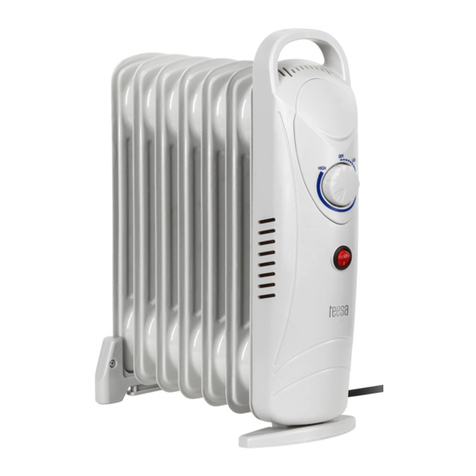
Teesa
Teesa TSA8035 owner's manual

Roberts Gorden
Roberts Gorden II Features & benefits
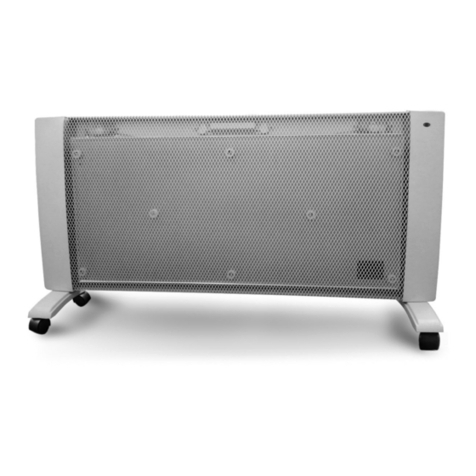
TESY
TESY MC 2011 Installation, Operation and Storage Manual
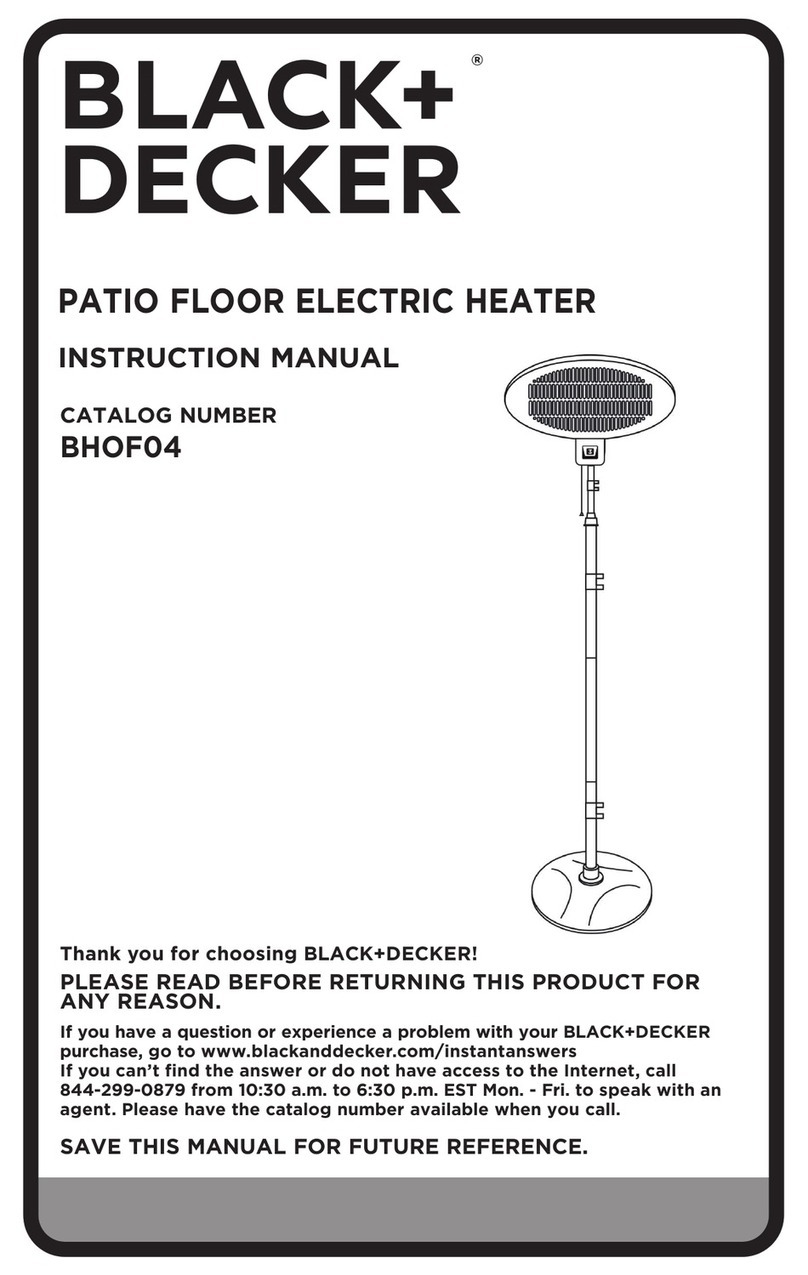
Black & Decker
Black & Decker BHOF04 instruction manual

Intertec Data Systems
Intertec Data Systems CP MULTITHERM DG.A HI operating instructions
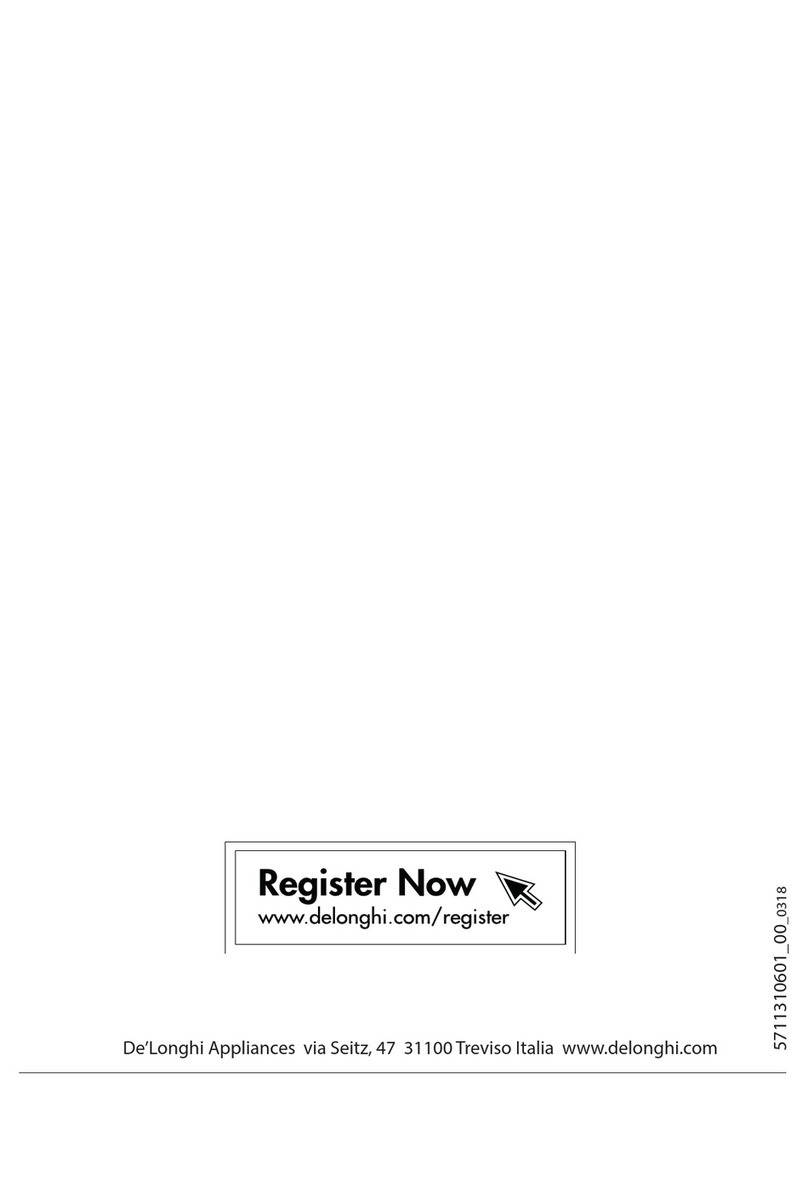
DeLonghi
DeLonghi HCM Series quick start guide

CONVECTAIR
CONVECTAIR APERO Installation, operating instructions & warranty registration

Dimplex
Dimplex XLE050 instruction manual

Traedgard Design
Traedgard Design List manual

Heylo
Heylo DE 20 Translation of the original instruction manual
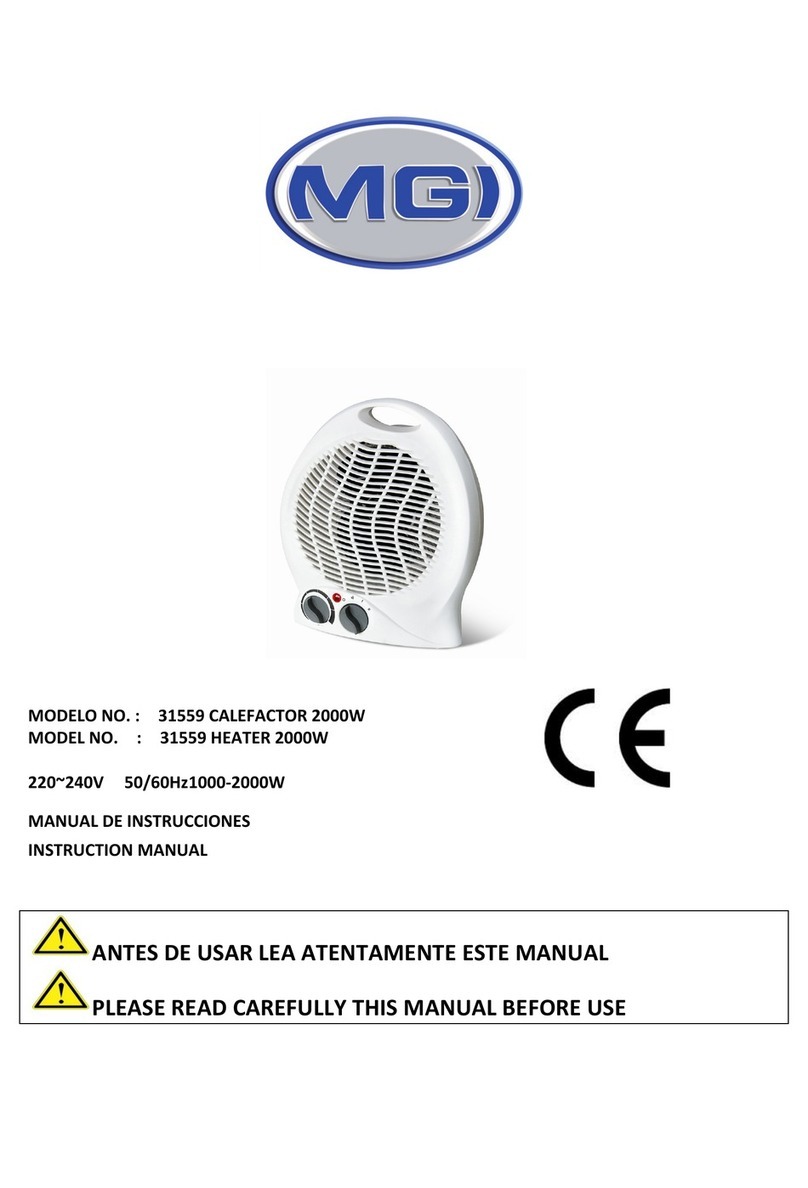
MGI
MGI 31559 instruction manual
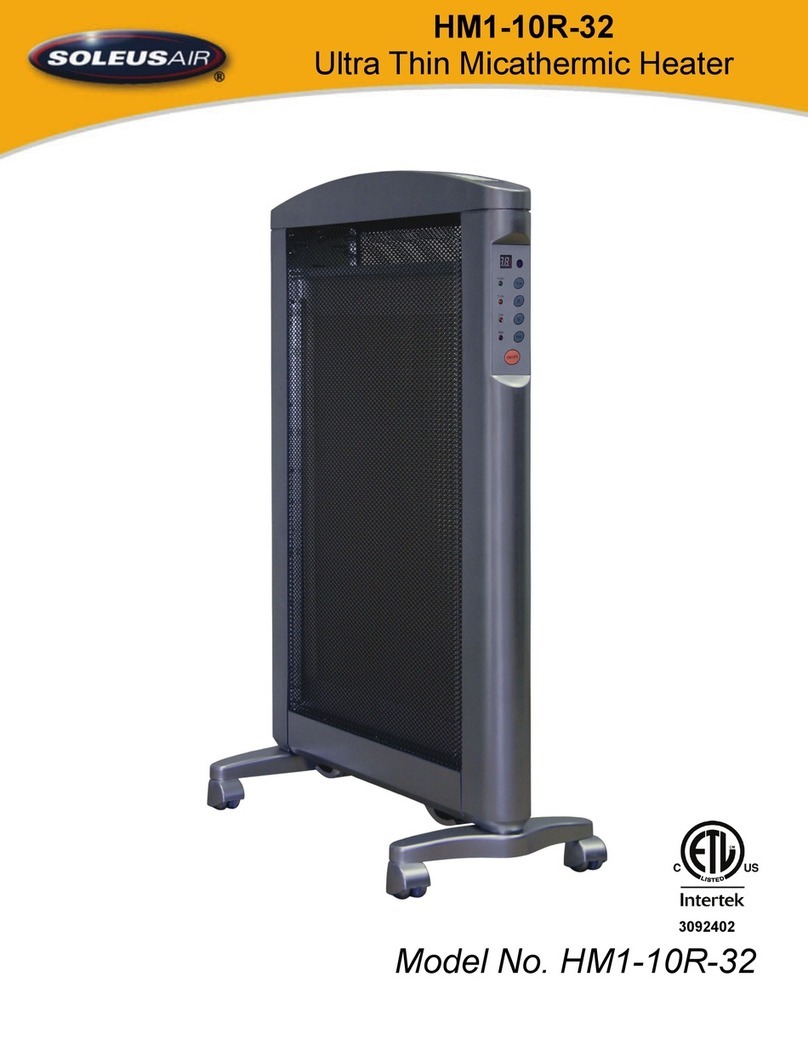
Soleus Air
Soleus Air HM1-10R-32 Important instructions


